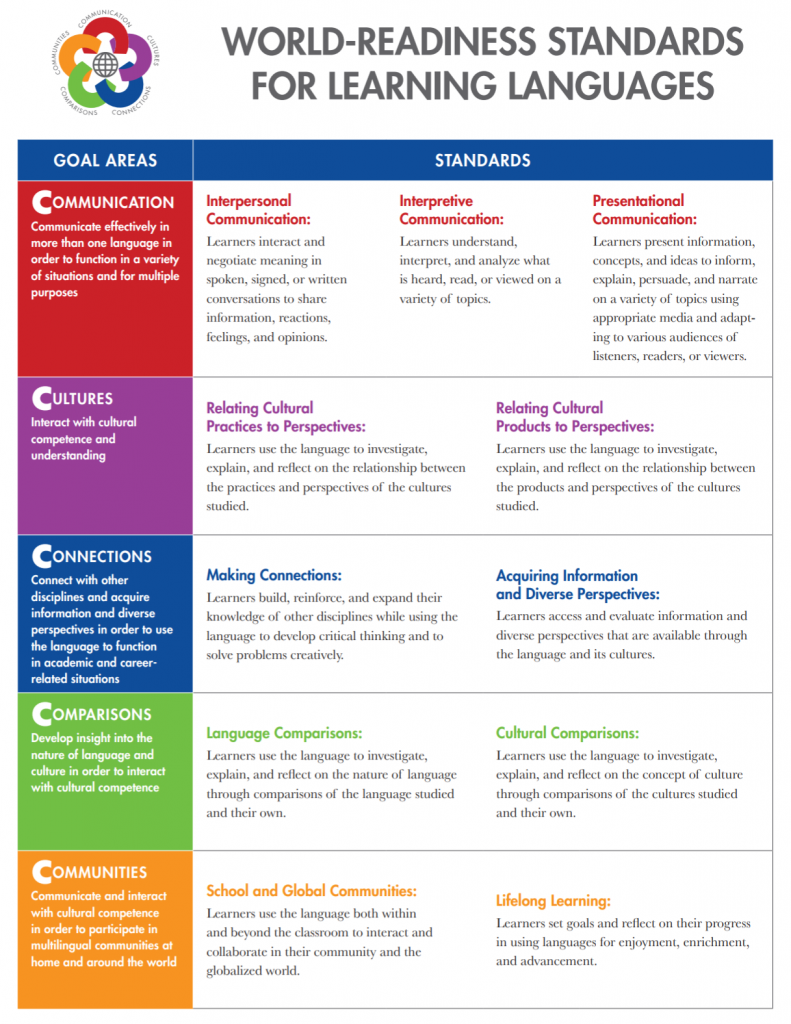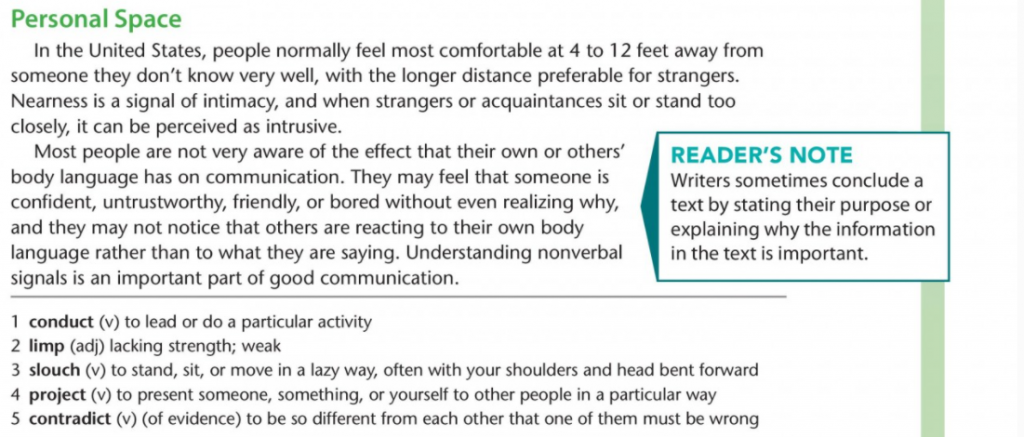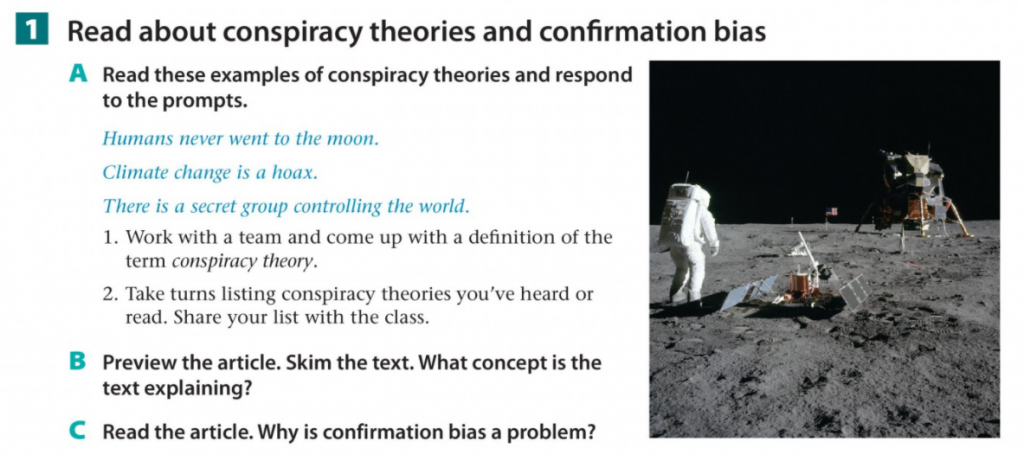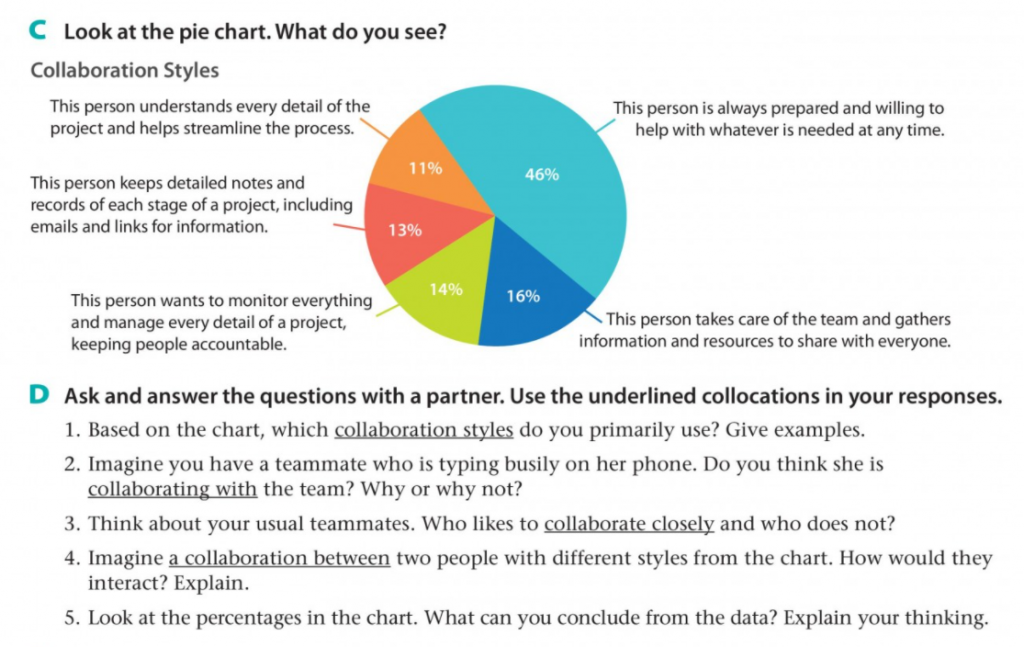The 5Cs
According to their website, the American Council of the Teaching of Foreign Languages (ACTFL) is an organization that aims to improve language education. They set forth the 5Cs of world-readiness standards for learning languages, and we can use these guidelines to evaluate the effectiveness of a textbook. The ACTFL 5Cs are communication, cultures, connections, comparisons, and communities. Learners need to be able to communicate in a wide range of situations, from engaging with peers to giving speeches. In addition, students need to be knowledgeable of the language’s cultural context. In a similar line of thought, students should be able to make connections and be able to use language to navigate different situations. Not only should learners make comparisons between their first language and new language, but they should also make comparisons between their prior knowledge and new perspectives. Finally, students should be able to interact in local and global communities with cultural awareness. (ACTFL 5Cs).

Communication 5/5
Step Forward does an excellent job of preparing students to communicate about a range of topics in varying settings. For example, there are units about time management, conflict resolution, and technological changes. Each unit has specific lessons requiring group discussion, written communication, and oral presentation. There is even a whole unit devoted to the topic of communication. In Unit 5, students learn that “in the United States, people normally feel most comfortable 4 to 12 feet away from someone they don’t know well” (Adelson-Goldstein et al. 55). Nonverbal communication is important for international students to learn about because different cultures often have their own body language and ideas about personal space. As long as students do the activities and have a teacher and/or conversation partner, they should be prepared to communicate in written and spoken English and fully participate in academic settings after completing the textbook.
Cultures 4/5
Step Forward does a very good job teaching and encouraging students to reflect on American culture. Many of the reading comprehension passages are about important research or current events in the U.S. For example, there is an article about conspiracy theories (Adelson-Goldstein et al. 26). While conspiracy theories can arise in any community, it is a topic that many Americans feel strongly about and truly believe. In addition, you could say the U.S. was built on the belief that citizens should not be too trusting of the government; that is why there are so many checks and balances within the system. Through readings like this, students are exposed to aspects of American practices and perspectives. The textbook’s main failing in the area of culture is its lack of pop culture references. Despite being published in 2019, there is little to no information about recent movies or celebrities. This is unfortunate as you can learn a lot about a people group based on their art and who they admire.
Connections 4/5
Step Forward does a very good job of encouraging students to make connections and apply English to other disciplines.
Comparisons ?/5
*Paragraph coming soon*
Communities 3.5/5
Step Forward does what it can to cultivate community. It is difficult for any textbook to meet the ACFTL standard of community on its own. Both classroom and global engagement rely heavily on the teacher, student, and environment. It is the teacher’s job to deliver interesting lessons that encourage collaboration, and it is the students’ job to participate. If someone is using this textbook to teach themselves English, it would be even more difficult to become involved in a community. With that in mind, Step Forward does an above-average job preparing students to interact in local and global communities. The textbook is esthetically pleasing and easy to understand, and almost all of the lessons have components that require group work. For example in Unit 6: “Collaboration,” students are asked to work with a partner to answer questions about collaboration styles (Adelson-Goldstein 61).
Bonus Points – Digital text
Step Forward is an eTexbook that takes full advantage of its digital formal. For example, there are embedded listening activities and fillable blanks where students can type answers directly onto the page. This would appeal to audio, visual, and kinesthetic learners, as it allows them to interact with the textbook and feel more involved with learning.
Summary
I intend to use this textbook to teach in a college setting. The specific classroom context I have in mind is newly arrived international students or those who have not passed their English tests. Overall, I think this textbook would fit their needs well. According to the introduction, Step Forward Level 5 is for learns to go into English-speaking schools or work environments. It is appropriate for my target audience, and I could see myself teaching from this textbook as it fulfills many of the guidelines established by the ACTFL’s 5Cs.
Works Cited
American Council of the Teaching of Foreign Languages, “5Cs of world-readiness standards for learning languages.” https://www.actfl.org/sites/default/files/publications/standards/World-ReadinessStandardsforLearningLanguages.pdf Accessed October 2021.
Howard, Jocelyn and Jae Major. “Guidelines for Designing Effective English Language Teaching Materials.” https://www.researchgate.net/publication/237476568_Guidelines_for_Designing_Effective_English_Language_Teaching_Materials. Accessed October 2021.
Adelson-Goldstein, Jayme, et al. Step Forward Level 5 Student eBook. 2nd ed., OUP Oxford, 2019.
WIDA. “ACCESS for ELLs Interpretive Guide.” https://wida.wisc.edu/sites/default/files/resource/Interpretive-Guide.pdf. Accessed October 2021.



